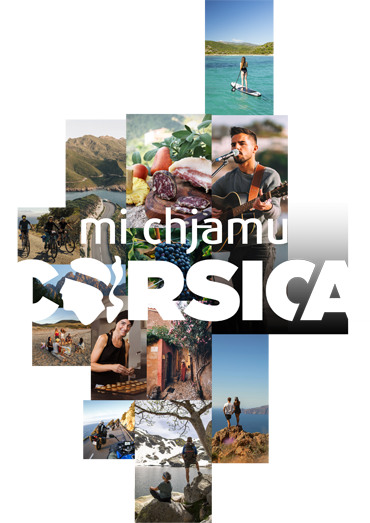Rechercher...
×
×
La destination Corse
Préparer mon séjour
FORET DOMANIALE ROSPA SORBA
Forêts
Ucciani;Ucciani;Pays Ajaccien
medias/image/pna_206_1320850964.JPG
La forêt Domaniale de Rospa-Sorba jouit d'un état de conservation remarquable de ces pinèdes de Pins laricio de Corse (habitat prioritaire).La surface proposée au réseau Natura 2000 a fait l'objet d'inventaires écologiques détaillés récents qui ont démontré toute sa richesse. La forêt a une vocation de production extensive de bois de Pin laricio. Le peuplement pur de Pins laricio (81% du site) présente des arbres remarquables, de gros diamètre. D'exposition naturelle Est, la zone proposée présente deux types de forêts : - Forêt de Pins laricio claire de montagne à Anthyllis hermania (référencé 42-642 Corinne), de valeur patrimoniale forte. Cette forêt est l'habitat de plusieurs espèces de Chiroptères forestiers dont une mentionnné à l'annexe II de la Directive et cinq autres mentionnées au livre rouge des espèces menacées de France.On constate entre autres la présence d'une espèce rarissime en France, la Grande Noctule (Nyctalus lasiopterus) qui a été trouvée en 1998. Présence également de divers amphibiens dont les 2 discoglosses sarde et corse. La Sitelle Corse et l'Autour Cyrno-Sarde sont aussi présents et profitent d'une certaine tranquillité, le massif étant difficile d'accès
Prix 0,00 €
infotour/formpna/2558/Decouvertes/Nature-et-paysages
http://www.visit-corsica.com/infotour/pna/id/206/indice/14/page/2/Decouvertes/Nature-et-paysages
_206
The state-owned Forêt de Rospa-Sorba is typical of Corsica's unspoilt pine forests, and is planted with Laricio pine, one of the island's priority habitats. The rich variety of the area has been demonstrated recently by ecological studies carried out for the Natura 2000 network. The forest produces substantial quantities of Laricio pine wood.
The planting of Laricio pines (81% of the site) has resulted in the growth of remarkable trees with a large diameter. Facing east, the proposed Natura 2000 area has two types of forest:
- Forest planted with Anthyllis hermania Laricio mountain pines (reference 42-642 Corinne), which are an important feature of the region's natural heritage. This forest is the habitat of several species of forest chiroptera (bats), including one listed in Appendix II of the Directive and five others listed in the red book of endangered species in France. In addition, this area is home to a species which is incredibly rare in France, the Greater Noctule bat (Nyctalus lasiopterus), which was discovered here in 1998. Amphibians are also present, including the Sardinian and Corsican discoglossus (frogs).
As access is difficult, this mountain area provides a peaceful habitat for species such as the Corsican nuthatch and the goshawk (Accipiter gentilis arrigonii).
The planting of Laricio pines (81% of the site) has resulted in the growth of remarkable trees with a large diameter. Facing east, the proposed Natura 2000 area has two types of forest:
- Forest planted with Anthyllis hermania Laricio mountain pines (reference 42-642 Corinne), which are an important feature of the region's natural heritage. This forest is the habitat of several species of forest chiroptera (bats), including one listed in Appendix II of the Directive and five others listed in the red book of endangered species in France. In addition, this area is home to a species which is incredibly rare in France, the Greater Noctule bat (Nyctalus lasiopterus), which was discovered here in 1998. Amphibians are also present, including the Sardinian and Corsican discoglossus (frogs).
As access is difficult, this mountain area provides a peaceful habitat for species such as the Corsican nuthatch and the goshawk (Accipiter gentilis arrigonii).
La foresta Demaniale di Rospa-Sorba presenta uno stato di conservazione notevole grazie alle pinete di pini larici corsi (il loro habitat naturale). Rete Natura 2000 ha condotto degli studi ambientali recenti e dettagliati su una parte della superficie che hanno dimostrato tutta la ricchezza naturalistica del sito. La foresta è famosa per la sua vocazione nella produzione estensiva del Pino larice.
L?imboschimento di Pini larici (il 81% del sito) è caratterizzato da alberi notevoli dal grosso diametro. Nella parte est, la zona considerata presenta due tipi di foreste:
- Foresta di Pini larici di montagna ad Anthyllis hermania (riferimento nel campionario 42-642 Corinne) di grande valore patrimoniale. Questa foresta rappresenta l'habitat naturale di diverse specie di Chiroptères forestali di cui una menzionata nell'allegato II della Direttiva e cinque altri nel libro rosso delle specie minacciate in Francia. Si è inoltre constato la presenza del Grande Notule, (Nyctalus lasiopterus) una specie rarissima in Francia, trovata nel 1998, oltre a diversi anfibi di cui i 2 discoglosses sardo e corso.
Un massiccio difficile da raggiungere che ha favorito anche la crescita della Sitelle Corsica e l'Autour Cyrno-Sardo.
L?imboschimento di Pini larici (il 81% del sito) è caratterizzato da alberi notevoli dal grosso diametro. Nella parte est, la zona considerata presenta due tipi di foreste:
- Foresta di Pini larici di montagna ad Anthyllis hermania (riferimento nel campionario 42-642 Corinne) di grande valore patrimoniale. Questa foresta rappresenta l'habitat naturale di diverse specie di Chiroptères forestali di cui una menzionata nell'allegato II della Direttiva e cinque altri nel libro rosso delle specie minacciate in Francia. Si è inoltre constato la presenza del Grande Notule, (Nyctalus lasiopterus) una specie rarissima in Francia, trovata nel 1998, oltre a diversi anfibi di cui i 2 discoglosses sardo e corso.
Un massiccio difficile da raggiungere che ha favorito anche la crescita della Sitelle Corsica e l'Autour Cyrno-Sardo.
42.0396042
9.0128926



